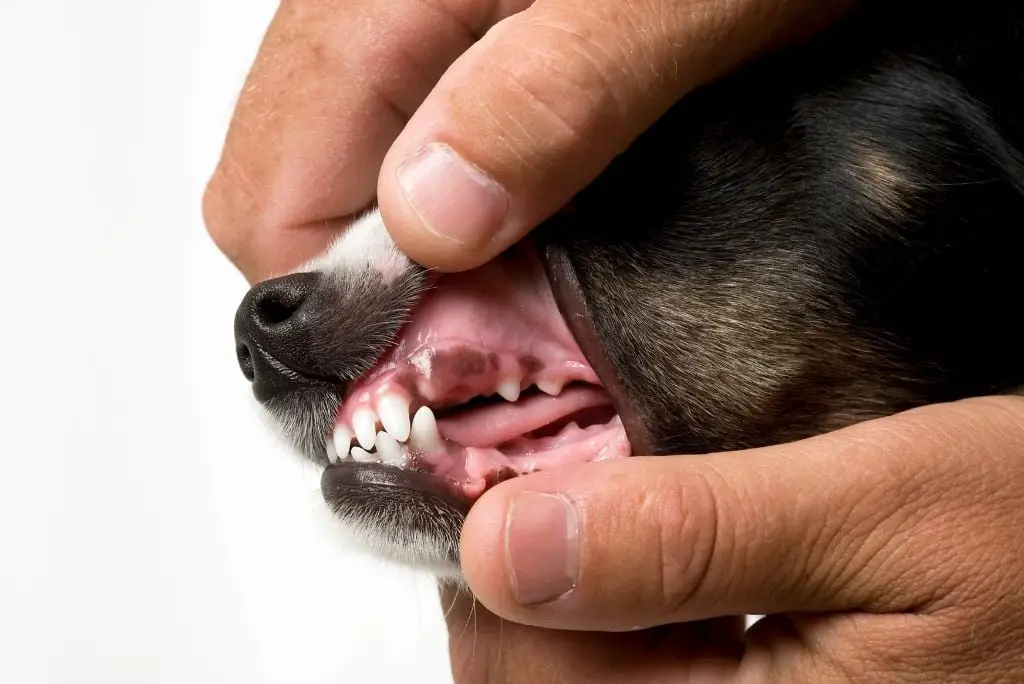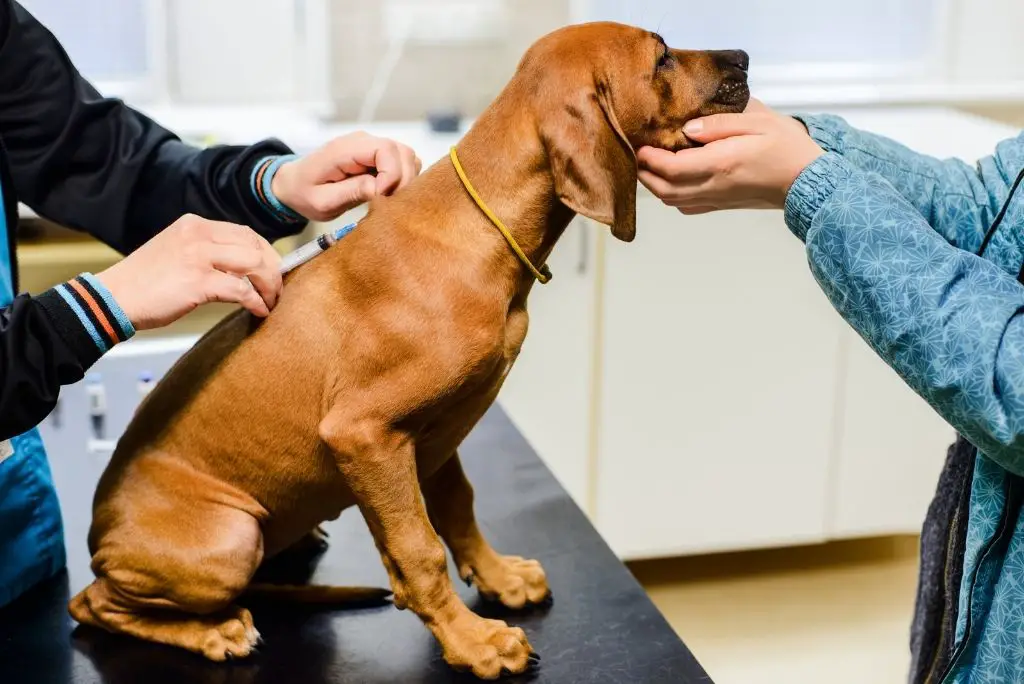Having a dog with parvovirus is one of the scariest things an owner can go through. Parvo is a common disease that can have deadly consequences. Anyone that deals with puppies on a regular basis needs to be aware of what are the most common symptoms of parvo.
A dog with parvovirus needs to be isolated from other healthy dogs as it’s highly contagious. It spreads very easily amongst dogs and puppies that don’t have their vaccines up to date. Parvo isn’t transmittable between humans and dogs. However, humans can carry the virus with them in their clothes, shoes, or hands and pass it on to other dogs.
Article contents
What does parvovirus do to dogs?
The parvovirus mainly affects the stomach and small intestines. It destroys cells in this area which results in reduced absorption and a disrupted gut barrier. This means that a dog with parvovirus isn’t able to absorb important nutrients which leads to weakness and dehydration. In puppies, this virus can also affect the bone marrow and lymphopoietic tissues. These are responsible for producing one of the five types of white blood cells. In some cases, it can also affect the heart.
Parvo is a very dangerous disease. The sooner you catch early signs that suggest your dog has parvo, the better chances it will have to survive. If you have a young pup, don’t hesitate to take it to the vet as soon as you notice anything strange. It can take up to seven days after the infection for a dog to show any symptoms. But when it does, some of the common symptoms specific to parvo are:
- Fever
- Letha0rgy
- Diarrhea with blood
- Vomiting
- Weight loss
- Dehydration
- Depression
If you notice any of these symptoms in your dog, call your vet immediately. You’ll need to act fast as most deaths from parvo happen in the first 48 to 72 hours after the symptoms begin. Your vet should also know if you have other dogs in your house. That way they can tell you what is the best line of action to prevent spreading.

How can dog owners protect their puppies?
As mentioned earlier, parvovirus is highly contagious. It spreads through body fluids which include a dog’s feces, urine, and vomit. When outside of a dog’s body, the parvovirus can survive for at least six months. This means it can even survive in the grass at a park for a long time. Dogs can catch parvo through direct or indirect contact with an infected dog or a contaminated object. It’s not uncommon for dogs to catch parvo when they’re out on a walk.
There are several ways in which dogs can catch parvo. It can either be by coming in contact with an infected dog or its body fluids, such as its feces and urine on the ground. Or by coming in contact with a contaminated object such as water and food bowls, collars and leashes, and even a person’s hands and clothes.
It’s important to note that an infected dog will start spreading within 4 to 5 days after the initial infection. As mentioned before, some dogs may not show any symptoms until 7 days after the infection. This means that a dog can spread parvo without showing any signs of infection. This makes it more difficult to prevent spreading. Because of this, the safest and best way to protect your puppy from parvo is by getting it vaccinated.
Typically, puppies get the first vaccine against parvo when they’re 6 weeks old. Then they get the first booster after 2 weeks and the second booster when they’re 1 year old. After that, dogs are vaccinated against parvo every year or less, depending on what the vet suggests. Until your puppy gets its first shot, don’t let it have any contact with dogs that you’re not 100% sure are vaccinated.

What is the treatment for parvovirus?
To diagnose parvo a vet may ask for blood work and run a test called an ELISA (enzyme-linked immunosorbent assay). This test tests the dogs’ feces for the virus antigens. This means that the vet will need a fecal swab and it takes about 10 minutes to give a result. Although this test is accurate, a negative result may not always rule out parvovirus in dogs that are showing symptoms. That’s because they may not be spreading the virus yet. In this case, the vet may ask for blood work to confirm it’s a case of parvo.
When it comes to treatment, unfortunately, there isn’t any known drug that can kill this virus. This means that dogs need to fight this infection on their own. All a vet can do is help support their immune system to help their bodies fight it off. This means that hospitalization is very likely for dogs with parvovirus. That way, vets can monitor the symptoms more closely and put dogs on a drip. By using a drip, dogs can receive intravenous fluids to prevent dehydration and effectively administer drugs.
The hospitalization period for a dog with parvovirus is, on average, five to seven days. During this period dogs with parvo are kept in isolation, away from other animals. Everybody that comes in contact with them will wear special clothes and shoes. These need to be easily removed and sanitized as not to spread the disease to other animals.
The survival rate of dogs that have access to veterinary treatment is around 90%. This is impressive when compared to a 10% survival rate for dogs that don’t receive any treatment. While hospitalization can be expensive, you can keep costs manageable by exporing pet health insurance options.
Making sense of it all
Parvovirus is a very dangerous and highly contagious virus. Fortunately, it can be easily prevented through vaccination. When adopting a dog, ask if it has at least one shot against parvo and when should it get the next booster. There isn’t any treatment for this disease. This means that a dog with parvovirus needs to fight off the infection by itself. All a vet can do is treat the symptoms and support its immune system so that it’s strong enough to do so.
If you notice any of the signs described in this post, get veterinary help immediately. Most deaths happen in the first 48 to 72 hours. Getting treatment in the early stages can increase your dog’s chances of survival.
